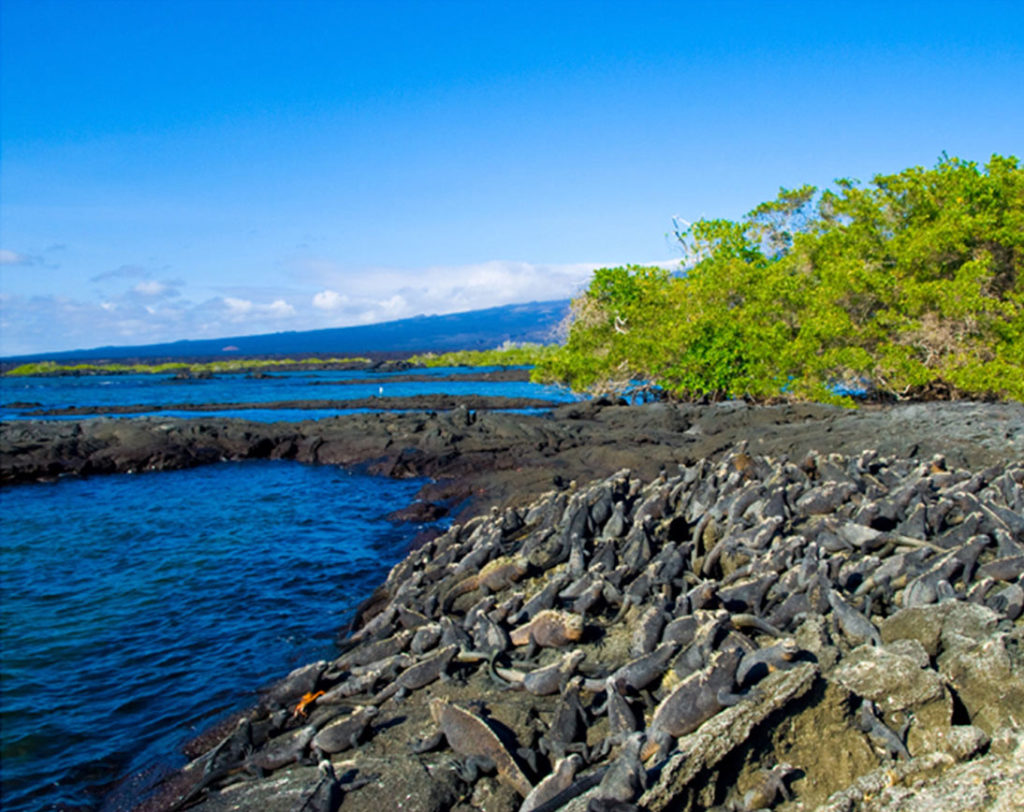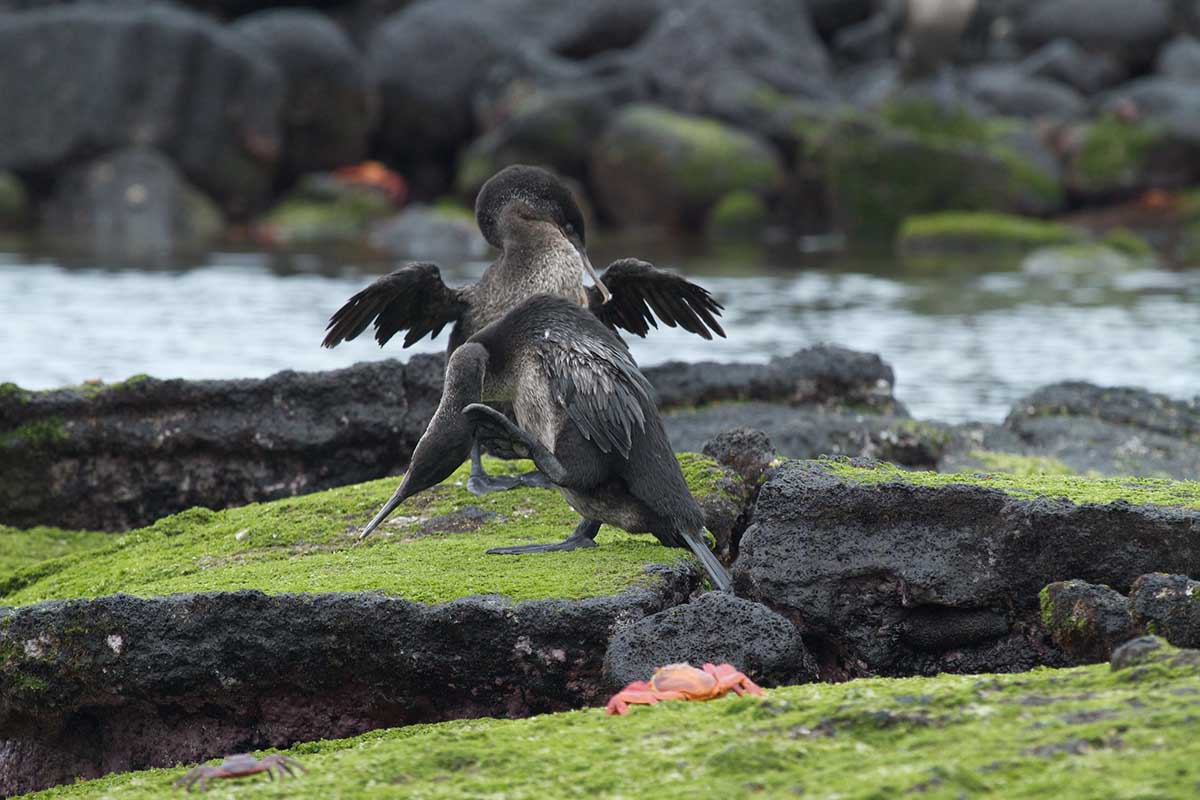Fernandina: More
It is the only world island without any introduced species. Amazing volcanic landscapes can be seen at this site, often called a "land without time".
The youngest of all islands, was created in 2003 and is still actively. It is located on the west coast of the archipelago, at the top of the hot spot. There have been 13 eruptions during the existence of Galapagos National Park. The last eruptions were in 2005 and 2009.
It's an unpopulated island.
The lava flow only mangrove zones and pioneer Cacti have survived their geological environment. This species has created one the most beautiful and attractive miniature forests on the planet, an area that demonstrates adaptation skills to the lack of soil.

The Land of Dragons: This is a large island with a lot of Marine Iguanas who survive because of its adaptation to eating algae. This is a great place to see the evolution of Iguanas into marine animals . You can also visit the largest and most imposing iguanas among all the visiting sites. The active crater is home to a large population of Land Iguanas.
Flightless Cormorant largest population to be seen. He lost his ability of flying because it was not needed in his environment. This bird was able to adapt to the lack of food underwater, and developed incredible swimming and diving skills. This colony can be visited to witness the evolution process in action.
Magical light Because of its geological origin, this island has a unique light that reflects on the ground and minerals. It creates a polarized view of reality. This island has a distinct atmosphere that is unlike any other archipelago location.
Locator Map

Fernandina Island Visitors' Sites
Espinosa Point
Fernandina's Espinosa Point, which is the only place we visit, allows us to see Isabela from the Bolivar Channel. This area boasts the most diverse endemic marine fauna in the Galapagos.
It is technically rich in "marine-upwelling", which directly and indirectly affects all food chains. This brings a wealth wildlife to the western archipelago. When the warm, nutrients-rich waters of the Cromwell Current meet the island, the upwelling takes place. This causes a lot of plankton to rise to the surface, providing food for many species.
- Highlights This island is one of the most beautiful in the world. It has been home to no man-introduced species. Its barren, flat landscape is defined by Espinosa Point's jet-black volcanic lava. It also houses the largest collection of endemic marine Iguanas. You will also find lava cacti and black, white, and red mangroves, Galapagos Hawks, Galapagos Cacti, and sea turtles.
- This island is home to the famed flightless cormorant.

Mangle Point – Fernandina Island
Mangle Point, an idyllic island off the coast of Fernandina is a wonderful visitor spot. It has not been invaded by any foreign species. You can enjoy a paddling trip through the shallow waters of the mangrove forest, where you may see sea lions, turtles, pelicans, and other birds. The red mangrove trees create a wonderful environment for wildlife to thrive.